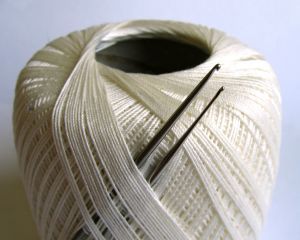Candida is quite possibly one of the most misunderstood medical conditions in existence today. When most people hear the word “yeast” they think of the vaginal yeast infection or oral thrush. The reality is that yeast infections, caused by the Candida albicans organism, can be quite complicated and can impact men, women, and children alike.
What is Candida Albicans?
Candida albicans is the scientific name for the yeast organism that lives within the human body. This organism is not usually harmless and is kept in balance by the good bacteria that live in your body as well. When the natural balance is altered, an overgrowth of the candida yeast organism can occur, leading you to develop some obvious and not-so-obvious infections. That balance can be altered by stress, hormones, antibiotic use, and a host of other factors.
According to the Centers for Disease Control and Prevention (CDC), “Candidiasis that develops in the mouth or throat is called “thrush” or oropharyngeal candidiasis. Candidiasis in the vagina is commonly referred to as a “yeast infection.” Invasive candidiasis occurs when Candida species enter the bloodstream and spread throughout the body.”
In short, the yeast fungus can enter your bloodstream and cause illness that in many cases is either misdiagnosed or completely undiagnosed for extended periods of time. The longer your case is undiagnosed, the more the Candida spreads and the more difficult it can become to treat.
The Symptoms of Candidiasis
For the most common types of yeast infection, like vaginal or oral thrush, the symptoms are relatively easy to identify and attribute to Candida. Other conditions, like jock itch, athlete’s foot, and ringworm are also relatively easy to diagnose. But there’s a catch. Having these conditions once or twice may mean you had an acute infection. Having these conditions regularly, on a repetitive basis, may be a sign that you have an underlying infection that needs more than acute treatment.
You do not need to have one of these classic conditions in order to have Candidiasis. Part of the reason so many people are undiagnosed for so long is because their symptoms mimic other conditions. Some of these symptoms include:
- Depression, anxiety, irritability, and mood swings;
- Headaches, difficulty concentrating, and fatigue;
- Gastrointestinal symptoms such as bloating, indigestion, abdominal pain, canker sores, stomach complaints, and loss of appetite;
- Urinary symptoms like kidney or bladder infections, fluid retention, and even bed-wetting;
- Skin irritations, nail problems, psoriasis, contact dermatitis, and other skin conditions;
- Muscle and joint aches and pains;
- Heart palpitations;
- Lack of strength, loss of coordination, and a low body temperature;
- Nasal congestion, flu-like symptoms, and sore throat symptoms; and
- Hypoglycemia, swollen lymph glands, and hypothyroidism.
These are just a handful of examples, but you can clearly see how a person who is suffering from Candida might be misdiagnosed with a urinary tract infection or some other disorder. The problem is that treating the misdiagnosed condition can make the Candida infection worse. The antibiotics used to treat the supposed infection actually do more damage to the bacteria/Candida balance and create a great environment for the yeast to thrive. Over time, it simply overtakes the body, adding new symptoms and making the ones you already have worse.
According to Jacob Teitelbaum, MD, “Have chronic fatigue syndrome, fibromyalgia, or even sinusitis orspastic colon? You probably have an overgrowth of yeast or Candida. Though poorly understood by most physicians, treating this underlying infection can have profound health benefits.”
Naturally Treating Candida
Most people I’ve met have had great success treating candida infections naturally with programs like the Candida Crusher diet by Dr. Eric Bakker, but let’s backtrack for a second.
Most traditional doctors do not completely understand Candida. They understand thrush. They understand vaginal yeast infections. They simply don’t grasp the concept of the systemic infection (a few don’t even believe it exists) and, as such, they’re likely to blow off your concerns or mistreat you. A few may offer you anti-fungal medications but they honestly don’t work alone, especially if your other lifestyle habits are promoting the growth of yeast within your body.
According to Dr. Bakker, “The most important thing you can do is to establish why you have developed a candida yeast infection in the first palce, and more importantly – how you can avoid future problems by addressing the actual ongoing or what we term ‘exciting’ causes. Testing will allow you to know the severity of your problem and bring a new sense of awareness to your health problems.”
Foods You Can and Can’t Eat
Once you’ve gone through some testing, you’ll find that diets like the Candida Crusher offer a total wellness solution that will attack your problem at the root. Yes, you will end up on anti-fungal medications and you’ll likely also end up taking a probiotic, but you’re going to attack your Candidiasis through diet as well. This means you’re going to cut all processed foods out of your diet, especially those containing sugar, carbs, and fungal ingredients (like mushrooms). You are literally going to remove anything and everything that could in any way, shape, or form promote the growth of yeast
More specifically, foods that you’re going to have to avoid altogether include:
- All fruits, especially melons and dried or candied fruits;
- Things that are considered “junk” like white sugars and white flour;
- Junky snacks of any kind, mainly anything processed, including soft drinks and juices;
- All forms of sugar, honey, molasses, and even maple syrup;
- All breads, milks, and cheeses;
- Alcohol, including wine, beer, brandy, and anything fermented;
- Condiments, especially those that contain vinegar;
- Malt products like Ovaltine or Milo;
- Any smoked or processed meats (no hot dogs, deli meats, etc);
- Any type of fungi, like mushrooms; and
- Leftovers. Do not eat ANY leftovers.
The list of foods you can’t eat looks intimidating, I’m sure, but the list of foods you can eat while on the first phase of the diet is pretty expansive. You may include:
- Vegetables – any and all that are low in refined carbohydrates; as long as they are cooked or steamed. You should avoid raw veggies while on this diet. Lean towards asparagus, beets, cabbage, cauliflower, cucumber, spinach, and similar veggies.
- Meats and eggs are great, especially if you are eating small amounts of animal protein from lean sources. You can eat turkey, veal, chicken, tuna, and a few other seafoods. Fresh is best.
- Vegetarian proteins like lentils, beans, peas, and nuts, seeds, and grains are appropriate as well.
Once you’ve done that for a while (we’re talking months here), you’ll start to add foods back into your diet. You’ll do this slowly so that you can easily identify which foods are making you feel ill on a regular basis. You can then avoid them for life.
Herbs and Natural Supplements
You’re going to want to follow the recommendations of your Candida Crusher diet and choose some herbs and foods to help support your immune system as well. A handful of examples include:
- Reishi is a potent anti-fungal food that will help to detoxify your body. You’ll start with small doses and work your way up. This can also be made into a tea.
- Ginseng has been used in Traditional Chinese Medicine for hundreds of years. It will help to boost your energy levels and strengthen your immune system.
- Coconut oil is touted as one of the healthiest fats on the planet, and for good reason. It’s a great energy source and is believed to have the ability to control your blood sugar and cholesterol levels.
- Aloe Vera is great for healing the stomach. It has prebiotic properties and is full of nutritious minerals as well. Aloe vera has been proven to help stunt the growth of candida.
- Noni has also been used for hundreds of years. It has amazing healing properties and is known for boosting the immune system.
Lifestyle Changes for a Brighter Future
You will, of course, have to make some lifestyle changes after you cure your Candida infection. You’ll want to make sure you get the proper amount of sleep each night and exercise daily, both of which will keep you strong and help to reduce the stress levels in your life. You’ll need to avoid going back to your old diet habits, avoiding sugars, carbs, and processed junk as much as possible.
Oh, and please – stop abusing antibiotics.
Candida is a serious health problem. There are people who have been walking around believing they suffer from chronic fatigue or a weakened immune system for years – and they do have those conditions, but not for the reasons they think. Talk to your doctor about your health concerns and if you’re not getting answers, talk to someone else – another doctor or a naturopath. The sooner you determine whether or not you have Candidiasis, the sooner you can start treatment.
Resources:
- · http://www.cdc.gov/fungal/candidiasis/
- · http://www.doctoroz.com/blog/jacob-teitelbaum-md/candida-eliminating-yeastfungal-overgrowth


